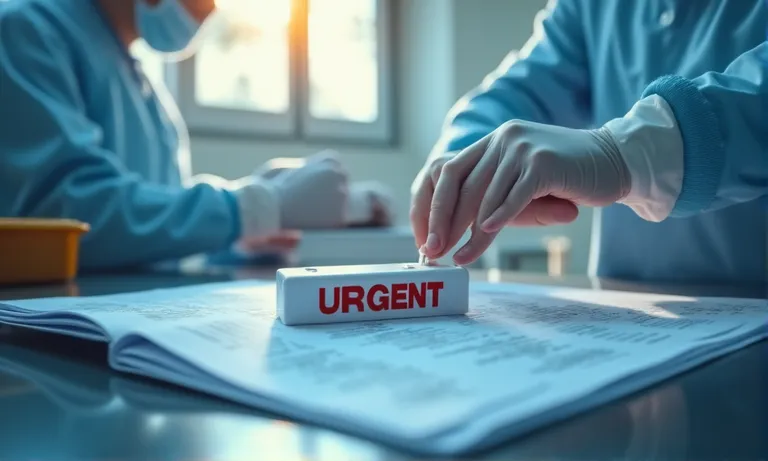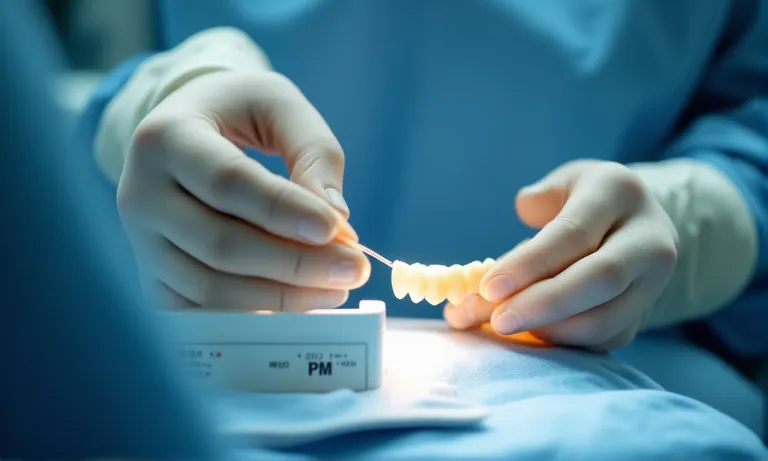Outsourcing crown and bridge work is often seen as a smart cost-saving move for dental clinics and procurement teams. But beyond the quoted unit price, what hidden costs may quietly erode real ROI?
To make informed decisions, it’s essential to understand the full cost structure behind outsourcing. Many hidden costs never appear on an invoice—but they surface in delayed shipments, remake-related rework, communication friction, digital workflow mismatches, and added administrative load.
This guide helps clinical managers and procurement professionals uncover and quantify these often-overlooked expenses, including:
- Volatile international shipping fees and customs-related charges
- High remake rates and how inconsistent quality impacts chair time
- Time-zone misalignments that delay case resolution
- Lost staff hours spent chasing clarifications or updates
- Material-specific risks, such as zirconia vs PFM case adjustments
- Timeline variability that undermines patient trust and scheduling
- How dental labs like Raytops help clients track hidden costs via SLA and performance metrics
By proactively managing these hidden variables, dental practices and DSOs can protect profit margins, reduce friction, and build more resilient lab partnerships that deliver long-term value.
What logistics-related costs are often underestimated?
The most commonly overlooked logistics costs in outsourcing dental crown and bridge work include express shipping surcharges, customs-related fees, and remake-driven re-shipping. These factors—often missing from initial quotes—can quietly inflate total case costs and disrupt clinic operations.
Shipping fees vary dramatically depending on urgency, volume, and destination. While a standard international shipment may seem manageable, urgency-based upgrades and fragmented case dispatches lead to cost escalations. Add to that customs delays, tariffs, and the possibility of having to re-ship a remake, and the real cost picture begins to shift.

Dental-lab-urgent-shipping-label-custom-clearance
How do international shipping fees fluctuate based on urgency or volume?
Express and volume-based surcharges can significantly alter shipping costs—even for the same case type. Below is a comparative illustration:
| Shipping Scenario | Cost Range (USD) | Key Variables |
|---|---|---|
| Standard 7-day delivery (DHL/UPS) | $25–40 | Light, small case; non-rush order |
| 3-day express delivery | $50–90 | Urgent cases, time-sensitive procedures |
| Bulk shipments (10+ cases) | $8–15 per case | Discounted, but requires batch planning |
| Re-shipping due to remake | $25–60 | Adds full freight again, unplanned expense |
Shipping costs are not fixed—they spike with urgency, drop with batch volume, and repeat when cases are remade. Clinics that don’t plan batch shipments or rely heavily on express options often see cumulative logistics charges impact profit margins.
What duties, tariffs, or customs delays can add unexpected expenses?
International shipping involves more than transport—it includes import compliance. Many clinics fail to account for:
- Duties or VAT charges on dental products, which can range from 5–20% depending on the destination.
- Broker handling fees or inspection costs during customs clearance.
- Storage fees caused by delays in documentation or missing paperwork.
- Time costs when a shipment is held for 48–72 hours, affecting patient appointments.
A mid-sized dental group in Australia experienced an unexpected $480 surcharge when one shipment was flagged at customs for unclear HS coding. These incidents may not appear on the invoice, but they have real consequences for cash flow and scheduling.
What is the cost impact of remakes that require re-shipping?
Remake logistics often double a case’s shipping cost and add complexity to clinic workflows. One Canadian clinic working with anterior zirconia crowns had a case fractured during transit. While we re-fabricated the crown within 48 hours, customs held the second shipment for re-verification. The clinic paid express courier fees again and had to reschedule the patient visit. These are not rare exceptions—they’re part of the hidden cost of managing rework internationally.
For this reason, we work with partners to pre-identify high-risk cases, flag urgent shipments, and offer weekly consolidation plans that reduce both remake and logistics exposure. Small process changes in shipping planning can lead to significant downstream savings.
By understanding and actively managing these cost variables, clinics can turn logistics from a liability into a controllable part of their cost structure. From our position as an overseas dental lab, we regularly collaborate with partners to optimize shipping cadence and reduce unexpected customs or freight-driven cost spikes.
How do remake rates and inconsistent quality drive hidden costs?
Remake-related issues are among the most expensive and least visible cost drivers in outsourcing. High remake rates not only increase direct production expenses but also trigger additional shipping, lost chair time, scheduling conflicts, and reputational risks. Over time, a seemingly small percentage of remakes can accumulate into a measurable financial burden.
Many clinics focus on per-unit pricing without calculating how frequent reworks shift the actual cost per successful delivery. Even a 5–10% remake rate can erode planned savings, especially when coupled with urgent remake handling or repeated fit issues.

dental-lab-remake-case-inconsistency-check
How does a high remake rate inflate overall cost over time?
Below is a breakdown showing how the cost per usable crown shifts depending on the remake rate:
| Remake Rate | Avg. Unit Price (USD) | Adjusted Cost per Successful Case | Additional Shipping (Est.) |
|---|---|---|---|
| 0–2% | $90 | $90–92 | Minimal |
| 5% | $90 | $94.74 | +$20–40/month |
| 10% | $90 | $100 | +$50–80/month |
| 15%+ | $90 | $105+ | +$100+/month |
The real issue is not the price per unit—but the cost per result. Clinics often absorb these surcharges gradually without realizing how they offset the value of outsourcing altogether.
What operational disruptions stem from poor fit or inconsistency?
When crowns or bridges arrive with marginal discrepancies, the cost isn’t just remake—it’s time. Poor fit can cause:
- Appointment rescheduling, which frustrates patients and wastes chair time.
- Internal staff having to spend time on case documentation and remake submissions.
- Clinical hesitation in reordering from the same lab, disrupting supplier continuity.
In one recent case, a U.S. DSO client reported that 3 out of 20 anterior zirconia crowns from another supplier required remake due to open margins. Beyond remake production and express shipping costs, their internal case manager spent nearly five hours over two weeks just coordinating follow-ups. That’s an invisible labor cost often ignored in the ROI discussion.
How do dental labs report remake metrics to assist ROI tracking?
Well-organized labs contribute to cost control by offering transparent reporting. Useful methods include:
- Monthly remake rate summaries by case type, material, or clinic location.
- Root cause analysis logs tied to technician notes and STL file comparisons.
- Collaborative dashboards tracking turnaround times and remake triggers.
- Shared SLA benchmarks to help clients assess trends and improvement areas.
As a lab partner, we often embed remake data into monthly operational reports—not just to prove performance, but to help clients identify which material types or prep styles may increase error risks. Cost control is a shared responsibility, and visibility is the first step toward fixing patterns.
When outsourcing to any dental lab, a low remake rate isn’t just a quality badge—it’s a direct financial advantage. And when issues do arise, the speed and transparency of lab communication can determine whether the cost remains manageable or spirals.
Can communication gaps increase case management costs?
Miscommunication is one of the most underestimated drivers of indirect costs when working with overseas dental labs. Vague instructions, file mismatches, time zone delays, and lack of structured feedback loops silently consume time, erode efficiency, and increase the likelihood of remakes or missed timelines.
Communication doesn’t just transfer information — it defines the quality of collaboration. When clinics and labs fail to align clearly and promptly, costs escalate through delays, rework, and duplicated effort.

dental-lab-file-mismatch-timezone-delay-email-chain
How do unclear instructions or incompatible file formats cause delays?
When a lab receives poorly labeled scans or missing clinical notes, the case doesn’t start—it stalls. A missing Rx detail or unsupported file type (e.g., STL without prep clearance views) often triggers a back-and-forth email chain just to clarify what should have been obvious. This creates:
- Production downtime as teams await clarification.
- Workflow interruptions for the clinic case manager.
- Increased risk of errors due to interpretation rather than clear data.
One DSO partner experienced an average 1.5-day delay across 12 cases in a single quarter due to file type mismatches and misnamed margin photos. The fix was as simple as adopting a shared file-naming convention—but the cost had already been paid in delay and rescheduling.
What hidden costs arise from cross-time-zone misalignments?
When teams operate across 8–12 hour time differences, every clarification can take a full working day to resolve. Hidden time-zone costs include:
- Delayed approvals or confirmations pushing back production.
- Staff spending after-hours time trying to get updates.
- Scheduling pressure on patient chair-time.
These delays are not dramatic — but repeated over dozens of cases, they cost real money. Especially when compounded by urgent case types or patient-driven deadlines.
How can a lack of structured feedback loops lead to rework?
Labs that lack feedback structures often miss patterns, leading to recurring issues. The table below illustrates how feedback maturity affects downstream efficiency:
| Feedback System | Characteristics | Cost Implication |
|---|---|---|
| No Feedback Loop | One-off replies, email only | High remake risk, repeated errors |
| Ad-hoc Follow-ups | Case-by-case check-ins | Moderate control, inconsistent response |
| Structured Review Loop | Monthly review, shared portal or dashboards | Error pattern detection, reduced rework |
We’ve seen clinics reduce remake rates by 15–20% after implementing a shared feedback protocol with us. Once misfit trends were spotted, we could proactively flag at-risk case types before fabrication.
Clinics often think communication is just a soft skill — but in distributed case workflows, it’s a measurable cost driver. From file compatibility to time zone handoffs, structured communication is not a luxury—it’s a safeguard. As a global dental lab, we co-design intake checklists, create shared turnaround dashboards, and set communication SOPs with our partners to keep this invisible cost in check.
What internal administrative burdens do outsourced cases create?
Outsourcing dental lab work may reduce material or unit costs, but it often increases internal workflow complexity. Time spent coordinating cases, tracking orders, onboarding new partners, or resolving cross-border confusion can quietly consume valuable staff hours—becoming a hidden operational expense rarely accounted for in procurement metrics.
These burdens typically fall on clinical coordinators, office managers, or case managers, who become the glue between lab and chairside workflow. Without clear systems in place, even simple tasks can snowball into workflow inefficiencies.

dental-office-admin-tracking-crown-orders
How much time is spent coordinating case details or chasing updates?
When lab systems are not integrated or responsive, case managers spend hours on routine tasks like:
- Reconfirming shipping or tracking information via email.
- Clarifying prescription instructions that weren’t followed precisely.
- Coordinating remake timelines or checking if cases cleared customs.
One U.K. clinic reported spending nearly 6–8 hours per week simply chasing updates from an offshore lab, including status checks, delivery follow-ups, and technician clarification. These labor costs add up over time—and are rarely included in ROI analyses.
Are there hidden labor costs for managing offshore workflows?
Yes. When dental labs operate in different regions and workflows aren’t standardized, staff must handle:
- Manual tracking of lab progress and turnarounds.
- Time zone email delays requiring late or early responses.
- Managing unclear escalation paths for urgent cases.
- Duplicated communication across departments (front desk, clinical, procurement).
These tasks may seem small individually, but for teams handling dozens of cases weekly, the labor investment becomes substantial—and hard to delegate or automate.
What onboarding or staff training costs arise with new lab partners?
The hidden cost of changing or adding a lab isn’t just trial orders—it’s internal adaptation. Here’s a comparison of resource input for three onboarding styles:
| Onboarding Type | Time to Integrate | Internal Workload | Risk of Workflow Gaps |
|---|---|---|---|
| No Onboarding Plan | 1–2 months | High | Frequent case errors |
| PDF-based SOP sharing | 2–3 weeks | Moderate | Mid-level risk |
| Structured intake forms + kickoff calls | 3–5 days | Low | Minimal if maintained |
We’ve seen the difference firsthand—when clients use co-designed digital intake forms and clear communication SOPs with us, the onboarding friction drops sharply, and internal team hours spent on correction fall by over 40% within the first two months.
Case outsourcing isn’t just an external process—it triggers a chain of internal adjustments. For dental groups and clinics with lean admin teams, these workflow pressures can quietly shift case costs back onto internal staff. That’s why as a global dental lab partner, we often support clients with customized tracking templates and escalation guidelines to minimize day-to-day administrative drag.
How can material and case type affect downstream adjustments?
Material choice and case complexity significantly influence the amount of chairside adjustment required—often impacting both cost and patient satisfaction. Certain materials are more forgiving under varied prep styles, while others demand precise collaboration between clinic and lab. Similarly, anterior aesthetic cases introduce additional sensitivity due to visibility and patient expectations.
Labs and clinics that fail to align on material selection and case indications may experience higher refinement time, increased remakes, or unsatisfactory esthetics—not due to poor craftsmanship, but because of mismatched expectations and specifications.

dental-anterior-crown-adjustment-zirconia-pfm-comparison
Do zirconia vs PFM crowns result in different refinement needs?
Yes. Different materials perform differently at the margin and occlusal level. Here’s a comparative table:
| Feature | Zirconia | PFM |
|---|---|---|
| Chairside Adjustments | Minimal (if well prepped) | More common due to metal-ceramic bond |
| Aesthetic Outcome | High translucency (monolithic) | May show opacity near margin |
| Prep Sensitivity | Requires sharper margins | More tolerant of variable preps |
| Patient Sensitivity Issues | Less heat conductivity | Higher chance of post-op sensitivity |
| Common Adjustment Triggers | Overbuilt contacts, occlusion | Margin overhangs, porcelain chipping |
A clinic switching from PFM to monolithic zirconia without adjusting prep style may find themselves making more chairside adjustments—not because of lab quality, but due to material mismatch.
Are anterior aesthetic cases more prone to patient-driven adjustments?
Definitely. Anterior restorations are visible, emotionally loaded, and closely scrutinized by patients. Labs often report higher remake requests on anterior cases due to:
- Minor shade mismatch (especially under daylight).
- Asymmetrical contour or translucency.
- Gingival emergence profile discomfort.
One private clinic in Singapore shared that after switching to layered zirconia for anterior cases, their initial remake rate dropped—but patient-driven “esthetic refinements” rose by 18% because patients became more specific about shading and surface texture once they saw the initial try-in.
This isn’t necessarily a lab error—it’s a visibility factor combined with expectation management. Provisional previews, shade tabs under daylight, and photo references can reduce downstream revisions.
How do labs help align material specs with regulatory or local fit expectations?
Experienced labs play a preventive role by guiding specification alignment. Best practices include:
- Material compatibility checklists before order confirmation.
- Regulatory labeling to meet country-specific standards (e.g., CE marking).
- Design consultations for complex aesthetic or multi-unit cases.
- Photo-matching or intraoral scan validations for esthetic zones.
- Noting regional preferences for margin style, contact tightness, or pontic design.
As an overseas dental lab, we’ve seen cases where labs meet technical specs but still trigger revisions due to lack of localization—such as U.S. clinics preferring lighter shades or tighter mesial contacts. That’s why we maintain case-type adjustment logs by market, helping prevent avoidable refinements across regions.
Material alone doesn’t cause issues—but when combined with unclear expectations or case misalignment, it often leads to added work at the chairside. Better planning up front always leads to smoother finishes in the operatory.
How do timeline deviations become hidden financial risks?
Inconsistent turnaround times can quietly erode trust, disrupt scheduling, and inflate operational costs—without ever appearing on an invoice. While most clinics expect occasional delays, frequent or unpredictable deviations from promised delivery windows often result in last-minute rescheduling, chair-time waste, and increased reliance on express solutions to compensate.
Time predictability is more valuable than speed alone. A consistent 7-day lab is more efficient for clinic planning than a lab that swings between 3 and 10 days. This variability introduces risk—not just inconvenience.

dental-front-desk-schedule-delay-lab-case-rescheduling
How does inconsistent turnaround time impact scheduling and trust?
Clinics operate on tightly packed appointment calendars. When lab cases arrive late—or arrive early without notice—it disrupts:
- Pre-booked chair time, which may go unused or need to be shifted.
- Staff availability, as adjustments require last-minute changes.
- Patient trust, especially for esthetic or urgent cases.
One multi-site clinic in the U.S. noted that delivery unpredictability from a previous offshore partner led to 7 missed appointments in one quarter, with associated patient churn and administrative rework. These are not just logistical hiccups—they affect perception of professionalism and reliability.
What is the cost of missed delivery commitments for the clinic?
Deviations from committed timelines may trigger:
- Unproductive chair time, estimated at $150–300 per hour.
- Emergency rescheduling efforts, which occupy admin staff and disrupt workflow.
- Overnight express costs, used to compensate when cases are late.
- Loss of patient confidence, leading to reduced rebookings.
These costs may not come from the lab invoice—but they show up in operational reports, staff overtime, and lost revenue potential.
How can labs provide predictability metrics to reduce time-based risk?
Reliable labs don’t just aim for speed—they help clients plan. Here’s how different lab approaches impact timeline risk:
| Lab Reporting Practice | Predictability Level | Clinic Planning Confidence | Hidden Cost Risk |
|---|---|---|---|
| No timeline tracking | Low | Poor | High |
| Reactive communication | Medium | Varies case by case | Medium |
| SLA-based delivery audit | High | Strong | Low |
At Raytops, we maintain rolling turnaround time metrics segmented by case type and region. Clients can access quarterly delivery consistency reports to assess whether delays were one-off exceptions or part of a pattern. This visibility helps partners optimize scheduling and reduce exposure to “timeline guesswork.”
In the dental industry, reputation rides on punctuality just as much as precision. While unit cost matters, time reliability is what protects your clinic from unpredictable operational losses.
How can hidden costs be proactively identified and managed with lab partners?
Managing hidden costs isn’t just about reacting to overruns—it’s about building systems that surface risks early. When dental labs and clinics collaborate on reporting, tracking, and outcome monitoring, they can jointly identify where resources are leaking and create measurable improvements in ROI.
The key is shifting the conversation from “price per unit” to “cost per successful delivery,” then using structured data and service level benchmarks to guide ongoing improvements.

dental-lab-clinic-sla-report-review-session
What reporting practices or SLA terms help surface hidden cost trends?
The following practices enable clinics to quantify and address indirect costs:
- Monthly remake rate reports, segmented by case type and materials.
- Turnaround time consistency logs, highlighting early/late trends.
- Shipping exception trackers, to monitor express usage or customs delays.
- Case error classification, showing root causes by technician or case type.
- SLA benchmarks, defining acceptable variation thresholds.
Without these, costs are invisible. With them, clinics can benchmark, negotiate, and improve continuously.
How can Raytops support remake rate monitoring and turnaround audits?
From our side as a global dental lab, we offer partners co-developed SLA frameworks that include:
- Quarterly performance reviews with historical trend analysis.
- Shared remake dashboards updated weekly, broken down by product line.
- Case-type-specific recommendations when data reveals recurring fit or timing issues.
- Standardized intake and photo protocols to reduce front-end ambiguity.
For example, one multi-clinic DSO in Canada reduced its express rework shipments by 30% within two quarters after we jointly built a custom alert system for turnaround anomalies. The goal isn’t just to fix cases—it’s to fix patterns.
What benchmarking tools help buyers look beyond price per unit?
Here’s a comparison showing how broader metrics give a clearer view of vendor performance:
| Metric Type | Short-Term Focus | Long-Term Cost Impact |
|---|---|---|
| Unit Price Only | Appears low | May mask remake/delay cost |
| Remake Rate + SLA Combo | Balanced | Medium transparency |
| Full Cost per Outcome | Holistic view | Highest ROI reliability |
By viewing outsourcing through this lens, clinics gain strategic control—not just savings. A good lab partner isn’t the cheapest—it’s the most cost-transparent.
Cost management is most effective when it’s collaborative. Labs like Raytops don’t just ship cases; we surface the numbers that help partners track performance over time and identify hidden cost drains before they become systemic.
Conclusion
While outsourcing crown and bridge work can offer competitive unit pricing, the real financial outcome depends on how well hidden costs are understood and managed. From remake rates to timeline inconsistencies and administrative burdens, these factors often surface only after operational friction begins. Clinics that collaborate closely with experienced partners can reduce unpredictability and strengthen ROI.
As an overseas dental lab, we’ve seen that the most effective partnerships aren’t built on price alone, but on shared metrics, transparent feedback loops, and mutual commitment to long-term performance. When hidden costs are made visible, better decisions follow.


